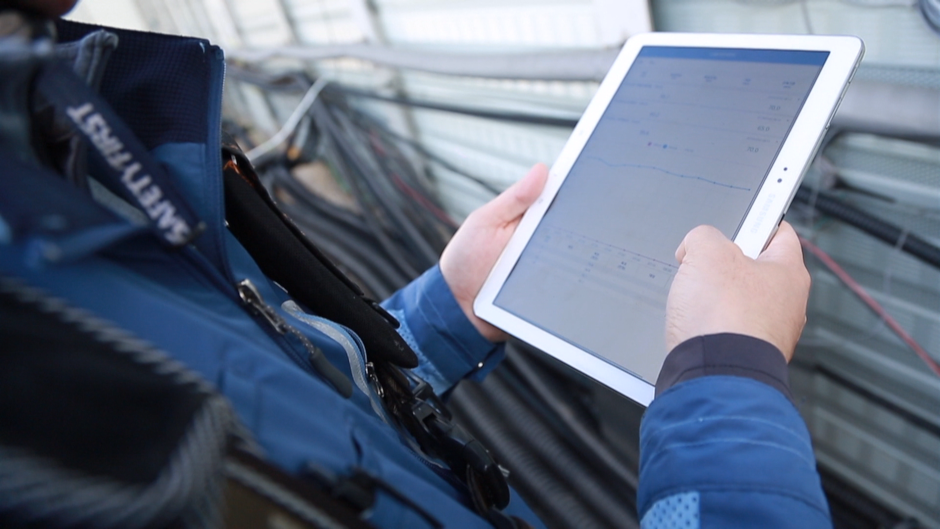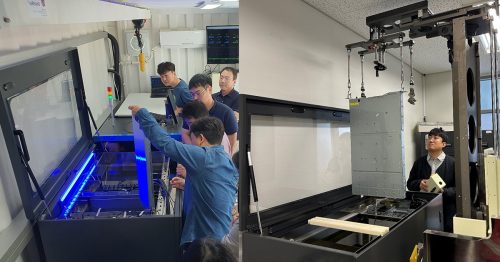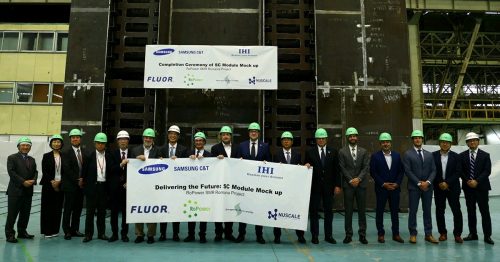When South Korea announced the commercial launch of 5G technology in early April, it was widely reported as the first country to do so. The technology has been hailed for its capacity to offer data speeds around 20 times faster than its 4G predecessor, meaning movie downloads can be measured in seconds and average latency is down to 1 ms from the previous generation’s 50 ms.
With smartphone manufacturers and telecommunications firms vying for the 5G crown, it would be easy to overlook the vast benefits across a broad swathe of industries. Among these is the smart construction business, which encompasses artificial intelligence, machine learning, big data, and mixed reality.
“Within the construction industry, in particular, a faster and more reliable 5G network opens up great potential for processing mobile data,” Cha Maeng-kyu, deputy general manager with Samsung C&T Engineering & Construction Group, explains. “To be at the forefront of this digital revolution and to collaborate on developing new technologies is being viewed as a game changer.”
Remote-controlled innovation
The world witnessed the capabilities of remote construction using 5G technology at the leading construction machinery trade fair, Bauma 2019, held last month in Munich, Germany. Visitors witnessed a 40-ton excavator being controlled using a 5G network from over 8,500 kilometers away in the South Korean city of Incheon, which is aiming to become the country’s first 5G smart city.
Cha – who oversees Building Team 3 within Samsung C&T’s FAB Innovation Group – recognizes there is an “inevitable impact of 5G on the ways in which our machines communicate and interact remotely.” He adds that the new technology is critical to providing the infrastructure needed to develop autonomous machines, as it can transmit huge amounts of data in much less time than 4G. This means autonomous construction machines can now recognize signals, map areas more accurately, and communicate with far greater ease. 5G’s minimal latency further strengthens efficiency and safety.
As well as operating vehicles like excavators and cranes more safely, Cha explains that remotely guiding multiple machines at once can help in dangerous situations such as the disposal of toxic materials. Moreover, workers underground can more effectively be tracked and located if necessary, and monitors may issue alerts if safety risks arise – whether because of a gas leak or due to a driver getting tired.
Drones and dust management
Aboveground, drones also have an important part to play given that their operations are enhanced by 5G. Cha’s team uses drones to record images, which help to produce 3D models – but 5G allows them to enhance high-quality video capabilities, including through augmented and virtual reality. Again, lower latency is one of the key factors promising to unlock the full potential of mixed reality technology.
Another buzz phrase of the fourth industrial revolution is the Internet of Things (IoT), and that too has a place in smart construction, as 5G bolsters the connectivity of objects and wearables, offering convenience and an efficiency boost.
“Through IoT technologies, noise and fugitive dust are monitored,” Cha says, as he described how Samsung C&T is implementing this strategy on an ongoing construction project for local firm Naver. “Whereas in the past someone had to physically carry out measurements, an IoT noise and dust measuring instrument is placed at the perimeter of the construction site, and we can monitor it in real time through this system.”
Equipment itself can also become the cause of a severe accident. Samsung C&T’s Smart Equipment Management System for Safety (SEMSS) works to prevent this from happening. When the system detects a sign of danger such as if a driver operates machinery differently than expected, a worker attempts to lift excessively heavy materials, or there is a sudden change in weather, those real-time signals are relayed to a manager. They can also ensure equipment is up to scratch by performing a test and receiving remote approval before operation.
Future
Cha is optimistic that many more positive changes are still on the way, “combining humans, machines and information to create a bigger synergy.”
“Ultimately, smart construction will become data construction based on data technologies,” he predicts. Cha also believes there will be less work carried out by human personnel in the field, especially as they will be able to operate robots via a mixed reality screen corresponding to a site in the real world. This is in addition to a rise in modular construction, with various modules produced in a factory being transferred.
“What was not possible in the past becomes possible. What was inconvenient in the past becomes convenient,” Cha puts it simply, with tremendous implications.








